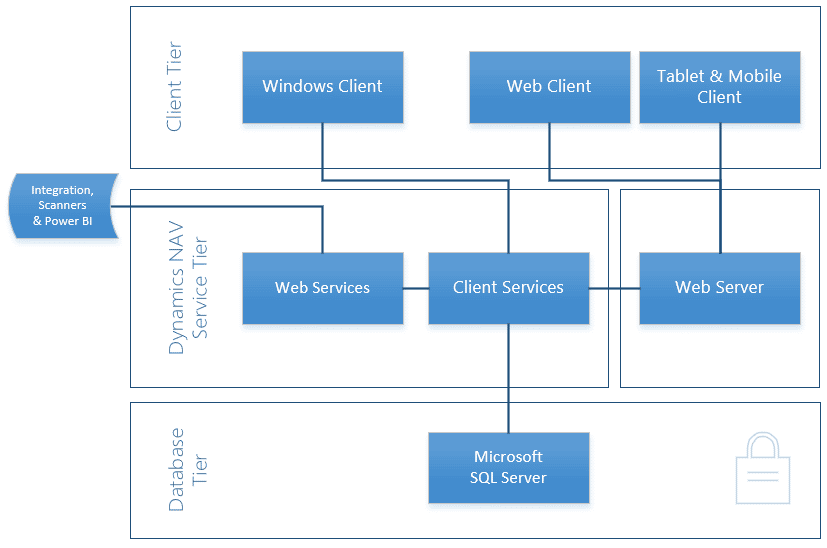Microsoft Dynamics NAV is a three tiered software platform. It has been developed to provide the greatest flexibility when supporting the kind of complex environments that require the extensive functionality of an ERP system. The following chart illustrates how each of the logical tiers work together, and how end-users access the application:
Database Tier
The data for the ERP system is stored in a SQL Database, and takes advantage of the mature Microsoft SQL Server database platform. Database administration and maintenance can be carried out using the standard and familiar tools that are provided with those products. Optimising performance and availability of the Database Tier is done using standard practise for Microsoft SQL Server, and can include technologies such as Transaction Log shipping, clustering, table partitioning and index optimisation.
Service Tier
The Dynamics NAV Server Tier performs the business logic and provides integration connectivity via Web Services, SOAP, oData and REST. The Server Tier configuration and hardware is optimised to provide best performance for connected clients, and is hosted on a separate server to the Database Tier for workload distribution. The Server Tier implements the business logic of the system and scales to allow a high number of simultaneous transactions.
Client Tier
Users can access the system via one of the available NAV clients. All clients run the same business logic and can be scaled across Service Tiers. Data storage and processing is offloaded to the respective Service Tier which means that the resource requirements for NAV are minimal, even when running in a web browser. The recommendations for processing and memory available under a Terminal Services environment are like those of a standalone PC, with the usual allowance for aggregation and considerations of concurrency.


